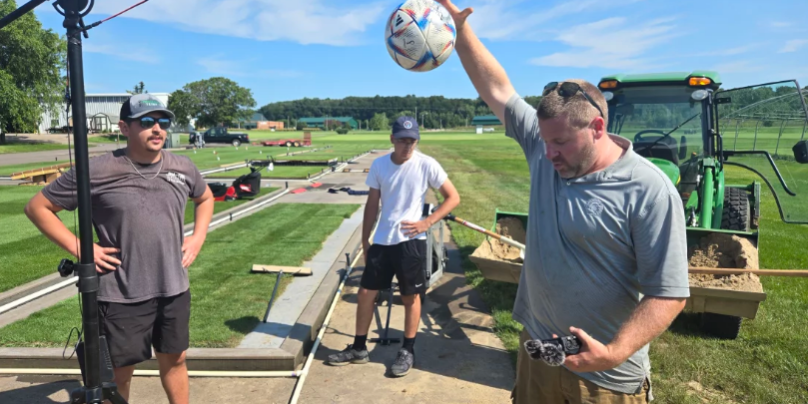In less than two years, one of the world’s biggest sporting events will be held in North America. The United States, Mexico and Canada will host the 2026 World Cup holding games in 16 cities. Researchers have spent years making sure the grass in each venue will be in prime condition and will have a consistent feel for the world class athletes racing up and down the field.
A history-making turf experiment
In 1994, soccer fans attended the first ever FIFA World Cup tournament held on U.S. soil.
The Pontiac Silverdome, outside of Detroit, Michigan, was one of nine venues for the event and it was the first time World Cup games were played indoors. Michigan State University researchers grew and brought in grass specifically for the stadium.
John Sorochan was an undergrad at the time and helped with the history-making project. He says he remembers being nervous trying to drive his mower straight down the field because of the amount of eyes on him
“We’re mowing back and forth, I had to keep stopping to hand clippings of the grass to the fans.”
The Silverdome’s roof meant researchers had to find a way to grow grass that could remain healthy without natural light. Trey Rogers, a MSU professor of turfgrass management, says they developed a system of planting sod on plastic lining.

“The sod would grow into this box, and then we would move it inside, but it was well-rooted,” he said. “All it had to do was survive that period of time, in those games,” he said.
Rogers says the experience made him wonder what else could be done.
“I’ve been thinking about this for 30 years, but we didn’t have anybody with the funding to push it forward,” he said.
FIFA support helps the pitch
Now with dollars from FIFA, there’s work underway to make sure the grass is just right for the 48 soccer teams playing in the 2026 World Cup.
“The pitch is everything,” said Alan Ferguson, FIFA’s head of pitches.
“It’s the stage on which the players perform, and we are the guys that give them that stage.”
So, Rogers and Sorochan, who’s now a turfgrass scientist at the University of Tennessee Knoxville, and their teams are studying how to manage 16 pitches in several different climates to make sure athletes don’t have to worry about the ground underneath them.
“They don’t want to be thinking about the footing and slipping, or how it’s going to be different from one stadium to the next if they’re playing a game,” Sorochan said.
Since 2021, there have been more than 70 experiments from Sorochan and Rogers’ teams from researching different ways to remove dead grass from the field to finding the best method to incorporate synthetic fibers into the natural turf to make it last longer.
In one experiment, a group of MSU students pack different levels of sand between asphalt and a layer of turf grass. They then drop a soccer ball on the grass and measure the sound of its bounce.
It is all about determining if the ball’s first bounce meets tournament regulations by reaching a height of 60-100 centimeters.
This detailed measuring can also be used in the future to better understand ways to use stadiums not built specifically for soccer games.
A grass field not only for soccer
Sorochan says he’s already thinking about more ways their work can have an impact outside the sport.
“All of this research is enabling us to have a legacy of research that will go and hopefully continue beyond 2026 but that will help professional soccer stadiums all over the world to professional baseball and NFL fields to college to even little city park and rec fields,” Sorochan said.
Professor Rogers says their students will be making a mark, just like he did 30 years ago when he helped develop the grass for the World Cup games at the Pontiac Silverdome.
“I think all of them will remember this for the rest of their lives. I know that ‘94 burns in my mind, even every day,” he said.
The first big test of this latest turf project will be next year. FIFA will hold a new version of its Club World Cup in the United States for international teams representing soccer confederations. Then the turf will be grown for the prestigious 2026 World Cup.
